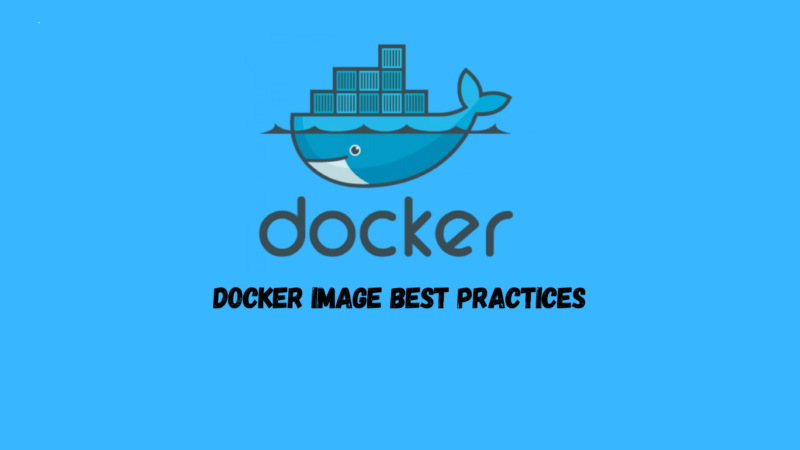Table of Contents Show
Introduction
In the rapidly evolving world of software development and deployment, Docker has become a powerful tool for containerization, providing a standardized and efficient way to package, distribute and run applications . Docker images play a crucial role in this process and are the foundation for containerized applications. To ensure optimal performance, scalability, and security, best practices must be followed when creating and managing Docker images . In this article, we’ll explore key strategies for optimizing deployments through Docker imaging best practices.
Choose the right base image
Choosing an appropriate base image is a fundamental decision when building a Docker image. The base image is the starting point for the application, providing the basic operating system and dependencies . Consider using official images from trusted sources like Docker Hub, as they are regularly updated and maintained by the community. Choose a minimalist base image to optimize image size . Alpine Linux is popular for its lightweight nature.
# Use a minimal Alpine Linux base image
FROM alpine:latest
Minimize layers
Docker images are composed of multiple layers, and each layer brings additional overhead. Minimal layers help reduce image size and speed up deployment . Group related commands into a single RUN instruction and use multi-stage builds to separate build dependencies from the final image. This ensures that only necessary artifacts are included in the production image.
# Multi-stage build example
# Build stage
FROM node:14 as build
WORKDIR /app
COPY . .
RUN npm install
RUN npm run build
# Production stage
FROM nginx:alpine
COPY --from=build /app/dist /usr/share/nginx/html
Use .dockerignore
Similar to .gitignore, .dockerignore files allow you to specify files and directories to exclude from the build context. The size of the image can be further reduced by preventing unnecessary files from being added to the image. Common excluded files include node_modules, .git, and temporary files .
node_modules
.git
*.log
Optimize Dockerfile instructions
Pay attention to the order of instructions in the Dockerfile. Place instructions that are unlikely to change (such as installing dependencies) at the beginning. This allows Docker to reuse the cache layer during subsequent builds, speeding up the process . Place instructions that change more frequently (such as copying application code) at the end of the file.
# Reorder instructions for caching benefits
FROM node:14
WORKDIR /app
COPY package*.json ./
RUN npm install
COPY . .
Update dependencies carefully
Regularly update application dependencies to take advantage of the latest features, performance improvements, and security patches. However, proceed with caution and test updates thoroughly to avoid compatibility issues . Pin version in the Dockerfile to ensure consistency across development, test, and production environments .
# Pin versions for stability
FROM node:14
Implement best security practices
Security is an important aspect of Docker image management. Use tools like Docker Security Scan to regularly scan images for vulnerabilities. Avoid running containers as root and follow the principle of least privilege by creating non-root users for your applications. Use image signatures and verify the integrity of the underlying images to ensure they have not been tampered with .
# Create a non-root user
RUN adduser -D myuser
USER myuser
Optimize image size
The smaller the image, the faster the deployment and the less resource consumption. Remove unnecessary files, dependencies, and artifacts from the image. Consider using multi-stage builds to separate build tools and dependencies from the final production image. Use tools such as Docker Slim to further optimize image size.
# Remove unnecessary dependencies
RUN apk del .build-deps
# Clean up package cache
RUN rm -rf /var/cache/apk/*
Using Docker Compose for multi-container applications
For applications with multiple services, Docker Compose simplifies the coordination of containers. Define services, networks and volumes in the docker-compose.yml file. This simplifies the deployment and management of complex applications and promotes consistency across development, test and production environments.
Here is an example of docker-compose.yml:
version: '3'
services:
web:
build: .
ports:
- "80:80"
db:
image: postgres:latest
Use CI/CD to automatically build images
Incorporate a continuous integration/continuous deployment (CI/CD) pipeline into your development workflow. Automatically build, test, and deploy Docker images to ensure consistency and reliability . Tools such as Jenkins, GitLab CI, and GitHub Actions can be integrated to trigger image builds when changes are pushed to the repository.
Monitor and optimize runtime performance
Regularly monitor the performance of containerized applications in production. Use tools like Prometheus, Grafana, or Docker’s native monitoring capabilities to collect metrics and identify performance bottlenecks . Optimize container resource allocation, adjust configuration parameters, and make informed decisions based on real-time data to ensure optimal performance.
Conclusion
Optimizing Docker image deployment is an ongoing process that requires making smart choices at every stage of development and deployment. By following these best practices, you can create efficient, secure, and manageable Docker images that promote seamless and scalable containerized application environments.
Keep up with industry trends, explore new tools, and adopt a mindset of continuous improvement to keep your Dockerized applications at the forefront of modern software development.






